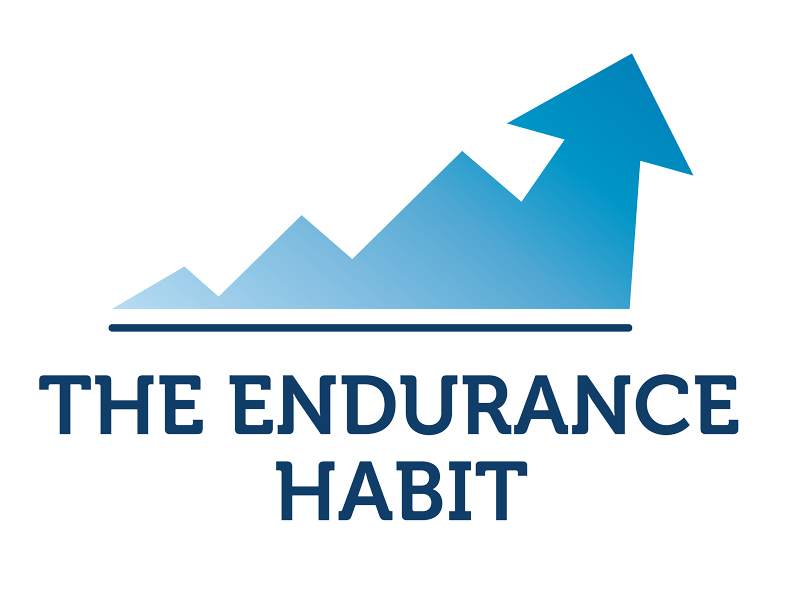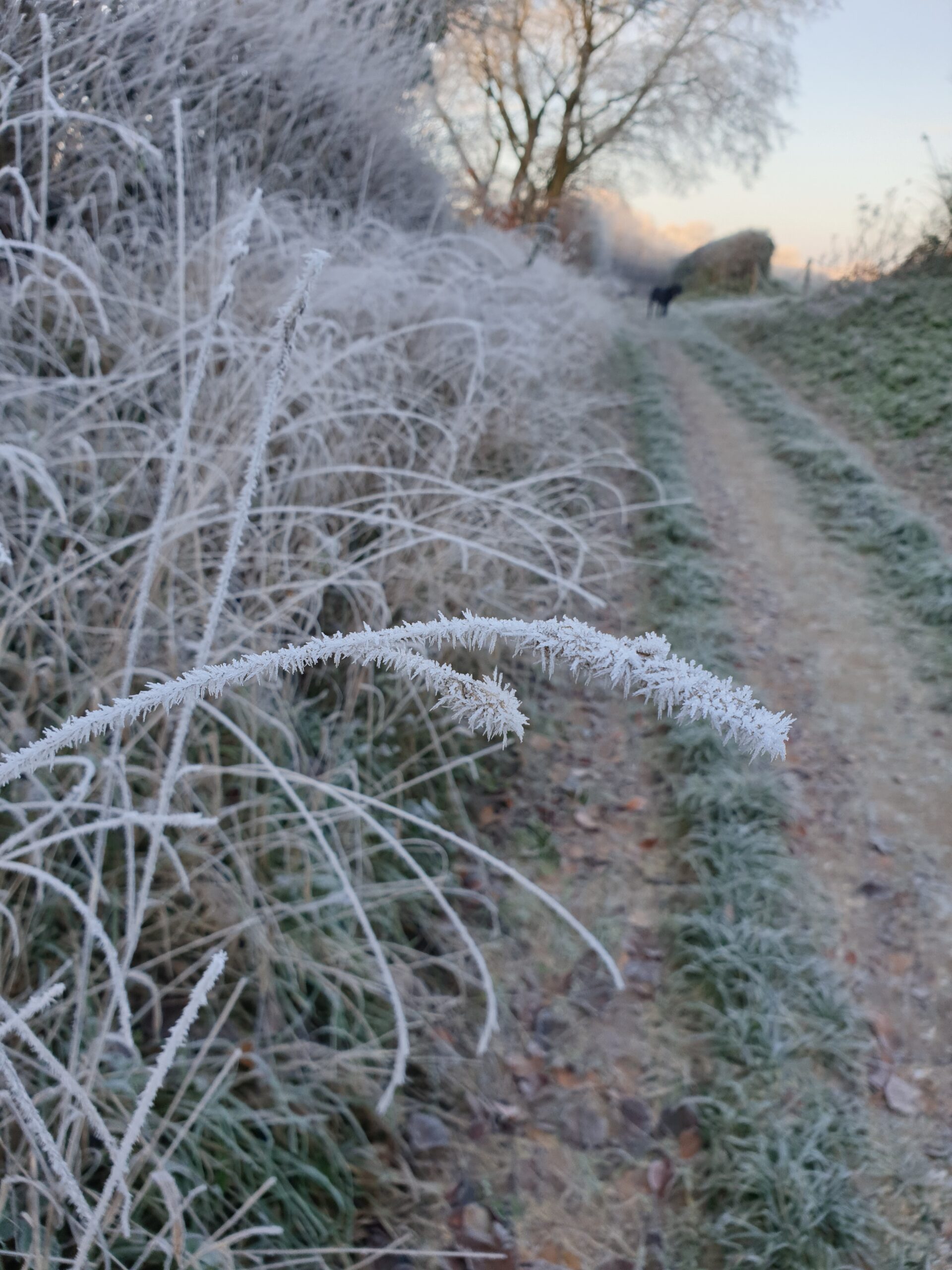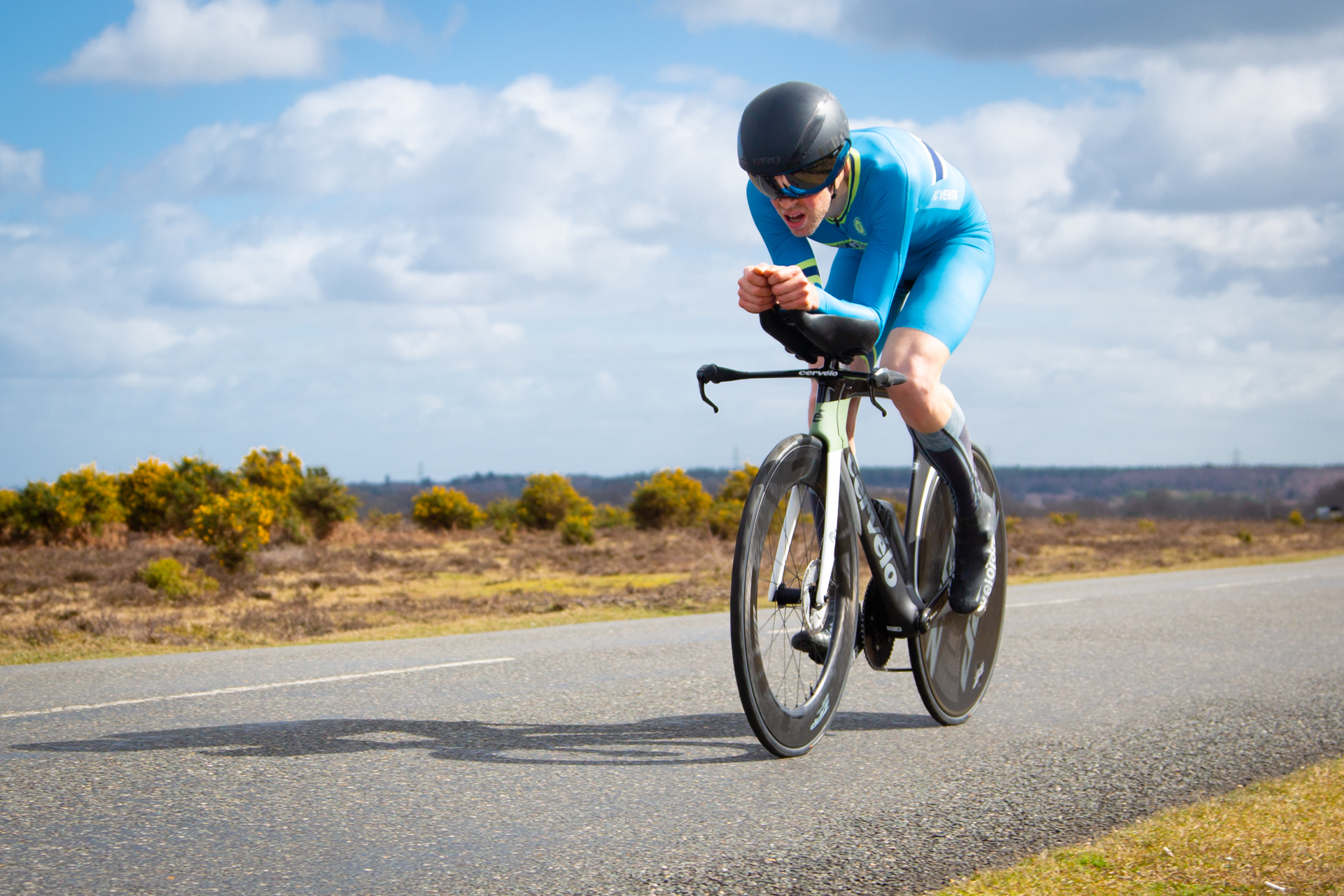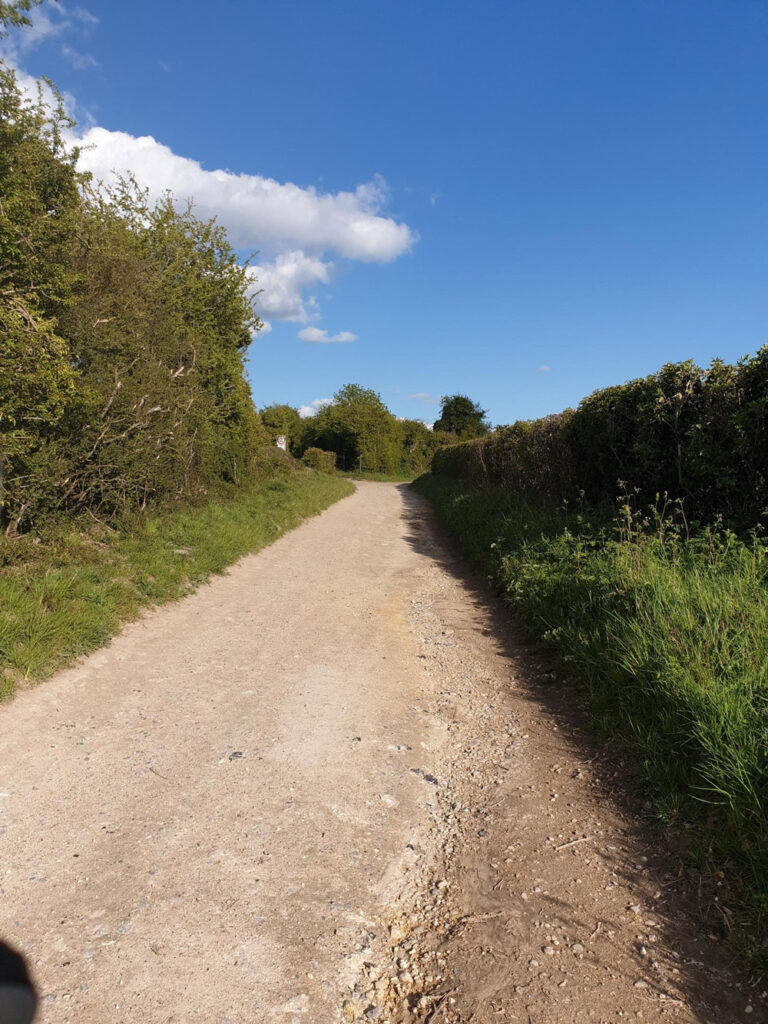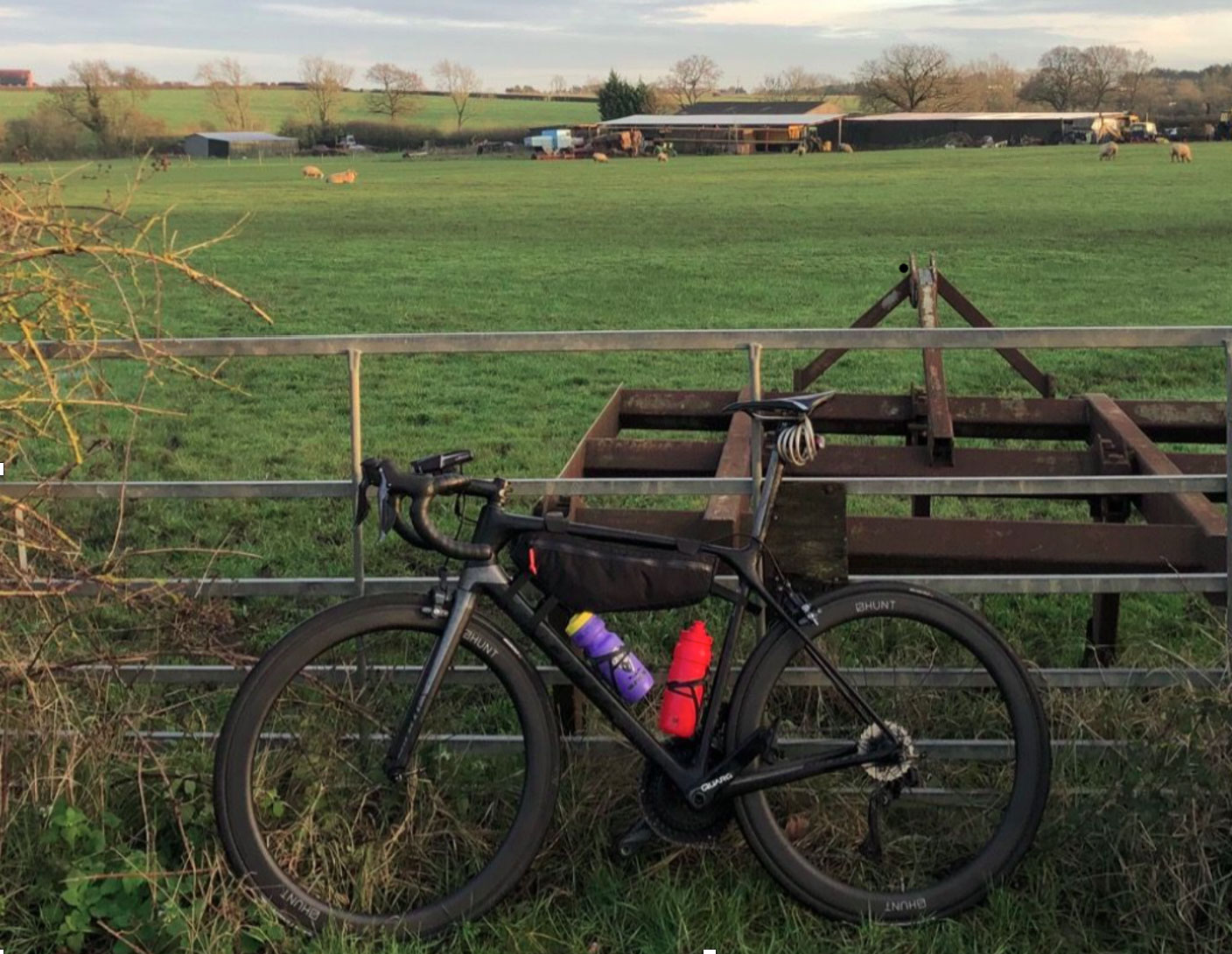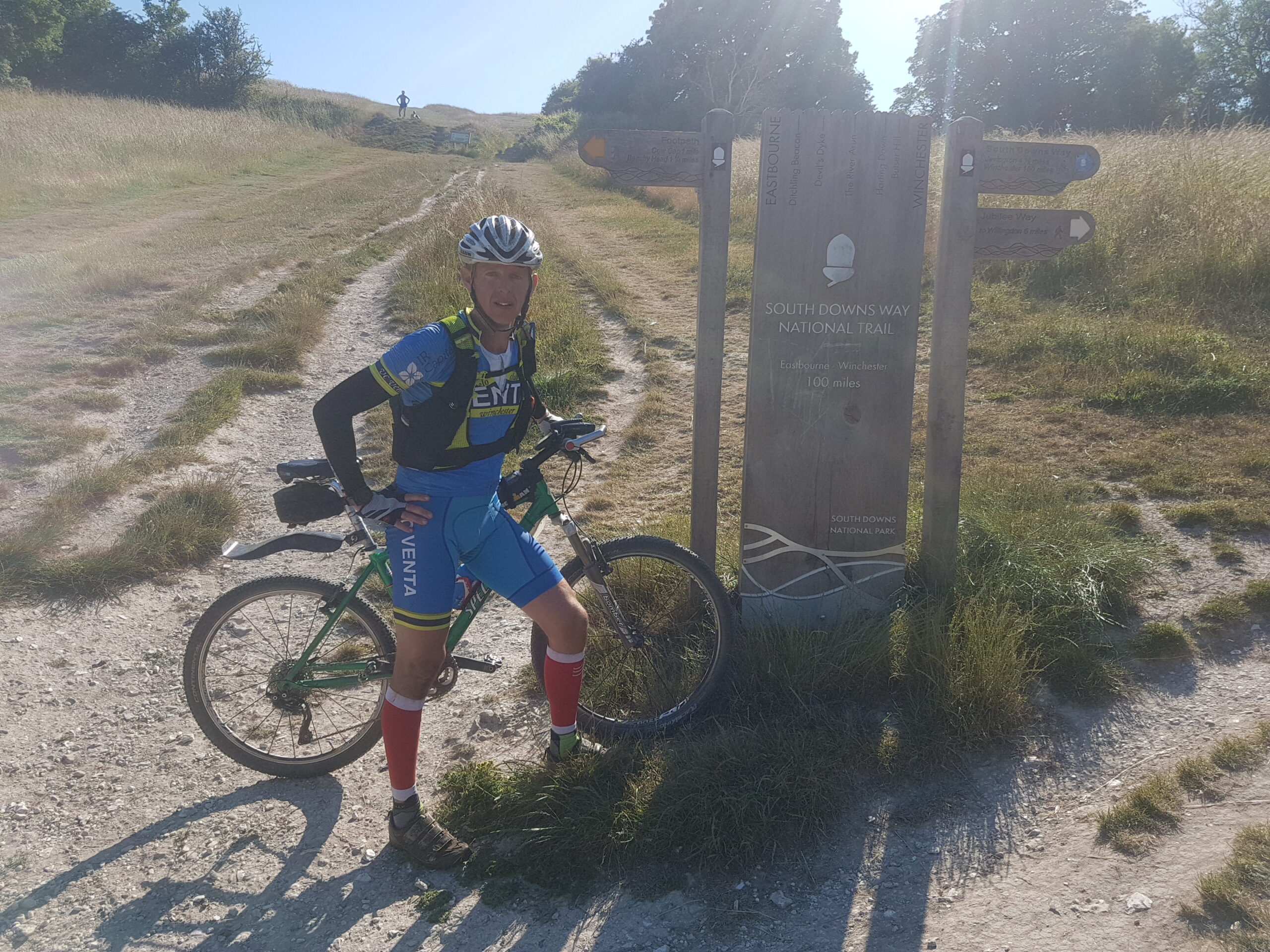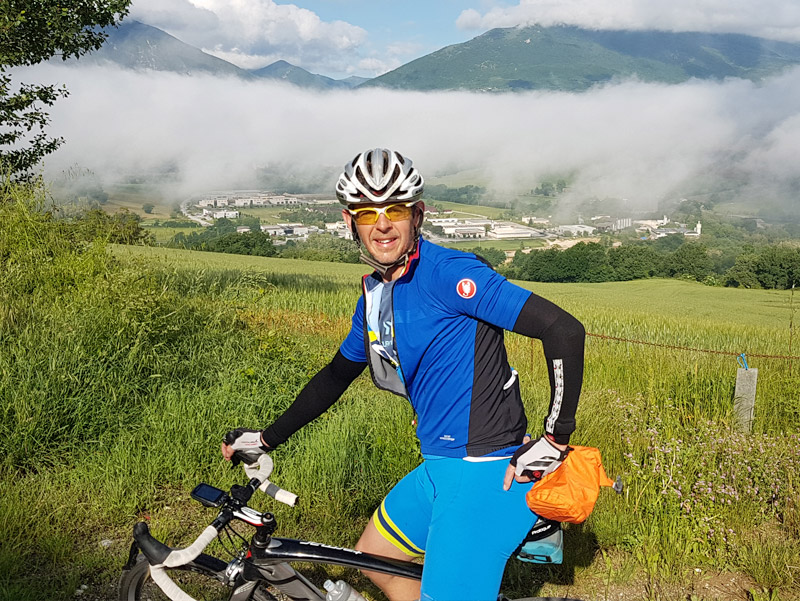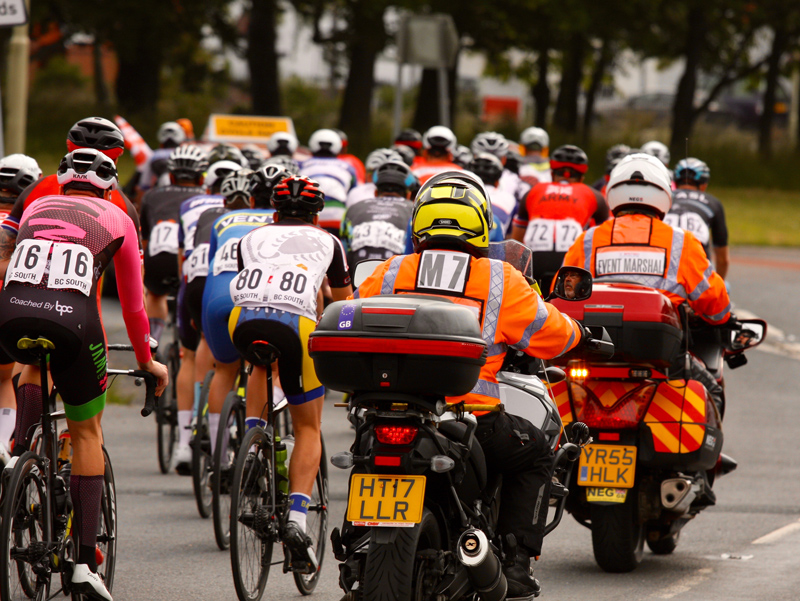Setting a micro goal can boost motivation and provide a focus for the period ahead. During the off-season it is helpful to set micro goals to stay on track with training. An example: RED Challenge run every day for a month to boost motivation and enthusiasm. By the end of the micro goal you will have re-enforced your drivers of motivation as well as learnt a few things along the way.
Continue readingWhat does it take to ride 80km (50 miles) in under two hours?
I sat down with Nick Tarmey from VC Venta to have a chat on how he was progressing towards the 12hour National TT championships in August 2021 as well as gain some insights after his “End of lockdown 50 mile TT” completed on Saturday 27th March 2021 in 01:58:47 at a breath-taking average speed of 40.7km/h. Strava link: End-of-lockdown 50 mile TT | Ride | Strava
- Nick, that was quite a ride to complete 80.5km in under 2 hours. What motivated you to set this as an early season challenge?
I always feel much more motivated to train when I have an event on the horizon. With the unpredictable covid situation this year, I decided in the middle of winter that I needed a definite spring event I could train for. I chose a 50 mile personal TT in the New Forest because it’s a decent challenge, relevant to my goals in the summer, and on my favourite roads. Being a relatively slow and hilly course, I knew I’d have to prepare well to get round in under 2 hours.
- How have you managed to adjust your training over the winter whilst still working in a very challenging environment on an ICU ward with Covid patients?
Within the constraints I had this winter – a busy job in the ICU and limited opportunity to ride my TT bike outside, I was really happy with how well I had prepared. I’ve been trying some different approaches to pre-race and on-bike nutrition, which I will tweak slightly for next time but, otherwise it all went well.
- Have you spent much time on off the bike training or any training specifically on your bike position?
With my focus this year being 50 mile, 100 mile and 12 hour TTs, I have been trying to build aerobic endurance with core strength and conditioning for the TT position. Practically, this meant getting in weekly long rides outside on my winter bike, along with sustained intervals on the TT bike indoors. To work on my conditioning, I’ve been doing twice-weekly off-bike strength sessions and riding the rollers in the TT position. A lot of these are sessions I wouldn’t naturally feel motivated to do, so being countable to Toby as my coach this winter has been a big help.
- Do you have a favourite training session that you look forward to?
Although indoor training gets the job done, I always prefer an outside ride. Over the winter, I always looked forward to a good, solid 4 hour endurance ride to the Forest. Now it’s great to meet up with club mates again for our weekly chaingang.
- How are you changing your training leading into the 25mile and 50mile TT’s?
I’m pretty happy with my aerobic base for now, so the next step is trying to get in a bit more intensity ahead of the shorter TTs. Our hilly chain gangs have been great for maxing out the heart rate, but I’ll also be doing some 2-5 minute above-threshold intervals on the TT bike.
- What 2 pieces of advice would you give other riders looking to improve their TT times?
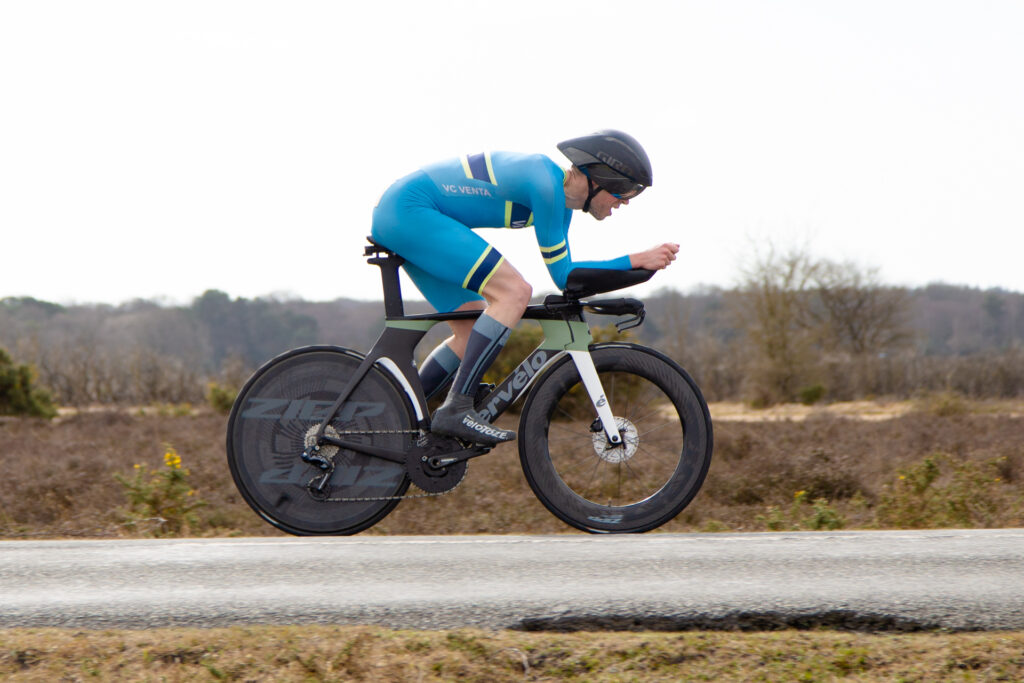 Firstly, I’d say forget about times and try competing for placings on the day. This means you can ride all sorts of interesting courses, rather than searching for the perfect dual carriageway and weather conditions.
Firstly, I’d say forget about times and try competing for placings on the day. This means you can ride all sorts of interesting courses, rather than searching for the perfect dual carriageway and weather conditions.
For those new to TT, I’d recommend adding in some sustained interval sessions 1-2 times per week. You don’t really need a power meter – just try holding the best effort you can for anywhere between 5 and 20 minutes.
Nick, thanks for your time and for answering my questions. It has been great to see how some simple technique work and indoor sessions focusing on body adaption over the winter are leading to some really improved speed gains on the road.
Best of luck for the Bar round of time trials.
Toby Leyland
The Endurance Habit.
King Alfred’s Way in under 24 Hours
Writing this whilst it is very fresh in my mind, some thanks first, highlights, tough bits, what went well and some things to change for next time (or pointers for others!). Whilst the full ride is not on Strava my mind and body felt every pedal stroke of that journey!
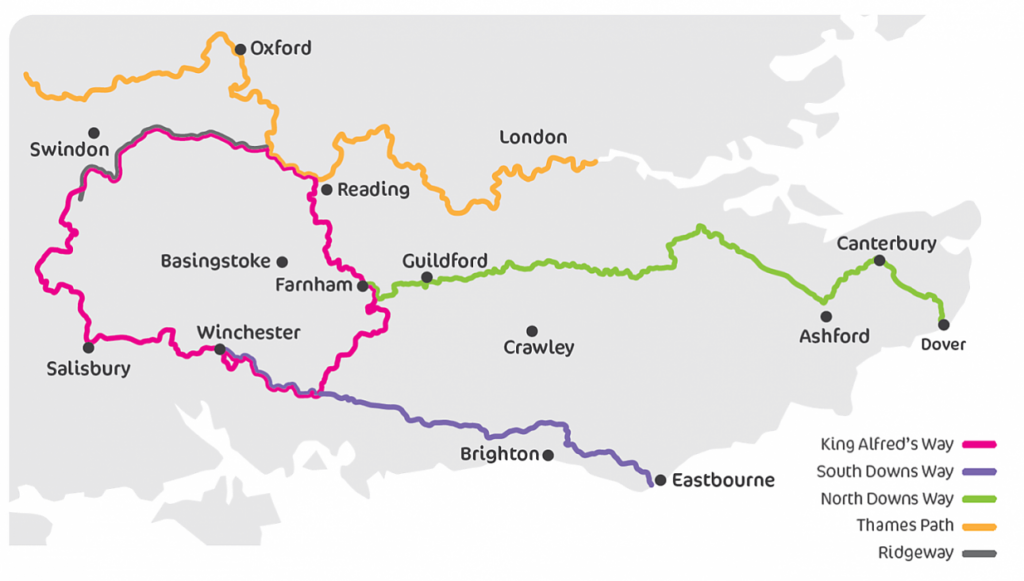
King Alfred’s Way | Cycling UK is a 350km circular long distance bike packing route from Winchester connecting Stonehenge, Salisbury plains, The Ridgeway, Thames Path, North Downs Way and South Downs Way.
Stats: Due to multiple GPS failures 272km recorded and parts of the last 80km estimated
Distance: 354km Avg speed: 16.09 kmh. Elevation Gain 4650m
Time: 22:01 hours Start: Winchester 8:15am Finish: Winchester 06:16am
Average temperature day time: 8’C night time: 1’C Lowest recorded -4’C
Carbs Consumed: 720g 35g/hr Liquid: 6.5lt or 300ml/hr
Bike: Pyga Stage Carbon Fibre Full Suspension, beast of a bike!
Gratitude:
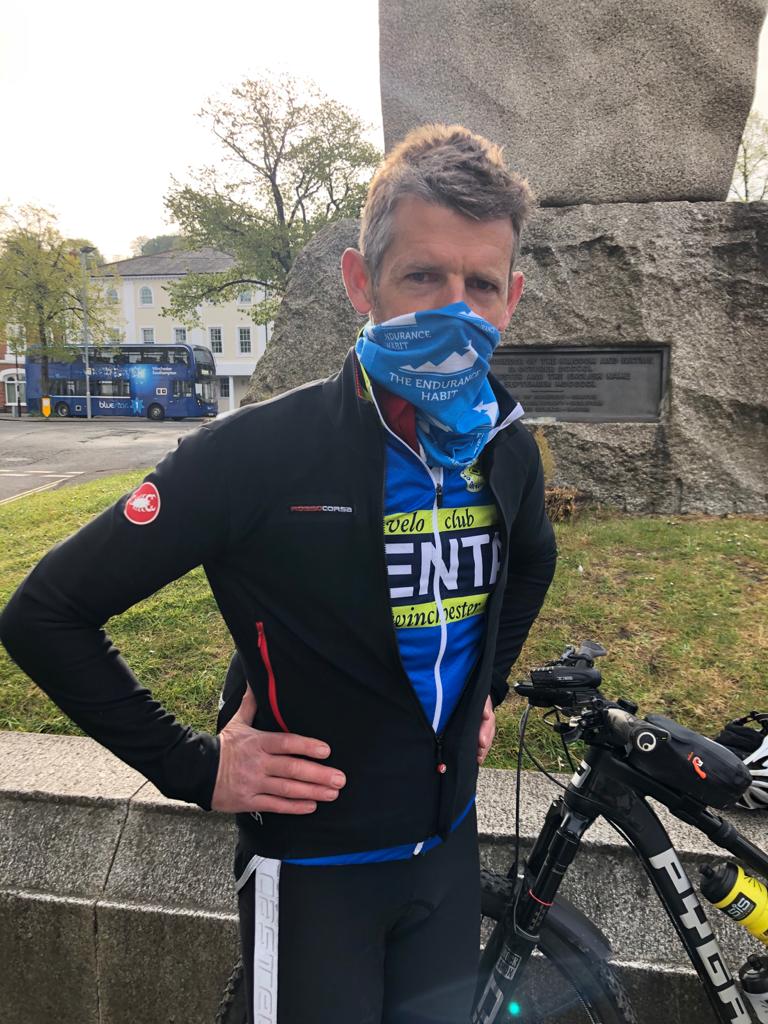 These adventures don’t happen in isolation and need the support of family and friends. So most importantly to Louise for endless encouragement, support and looking out for me. Love you. x
These adventures don’t happen in isolation and need the support of family and friends. So most importantly to Louise for endless encouragement, support and looking out for me. Love you. x
To Jamie Collins who met me at 04:45am at Beacon Hill and rode with me to Winchester. I was at my lowest ebb at that point, so really it was appreciated. To Angus, Ed, Rob, Charles, Chris for providing encouragement and inspiration. To Russ at Service4cycles for preparing the bike, sorry I will be bringing it back as I managed to break some parts again!
Highlights:
It really is a cracking route and showcases what a beautiful and varied country we live in. The range of flora and fauna is breathtaking. Clever planning connects iconic routes together into one single ride, job well done by Cycling UK.
Glimpsing Stonehenge from afar and then up close was a real joy, the chalk White Horse lifted my spirits coming into Avebury. Getting in and around Reading was a test of micro navigation. Finally reaching the South Downs way and familiar territory, whilst not job done (still 3 hrs to go) the end was in sight.
Tough Bits:
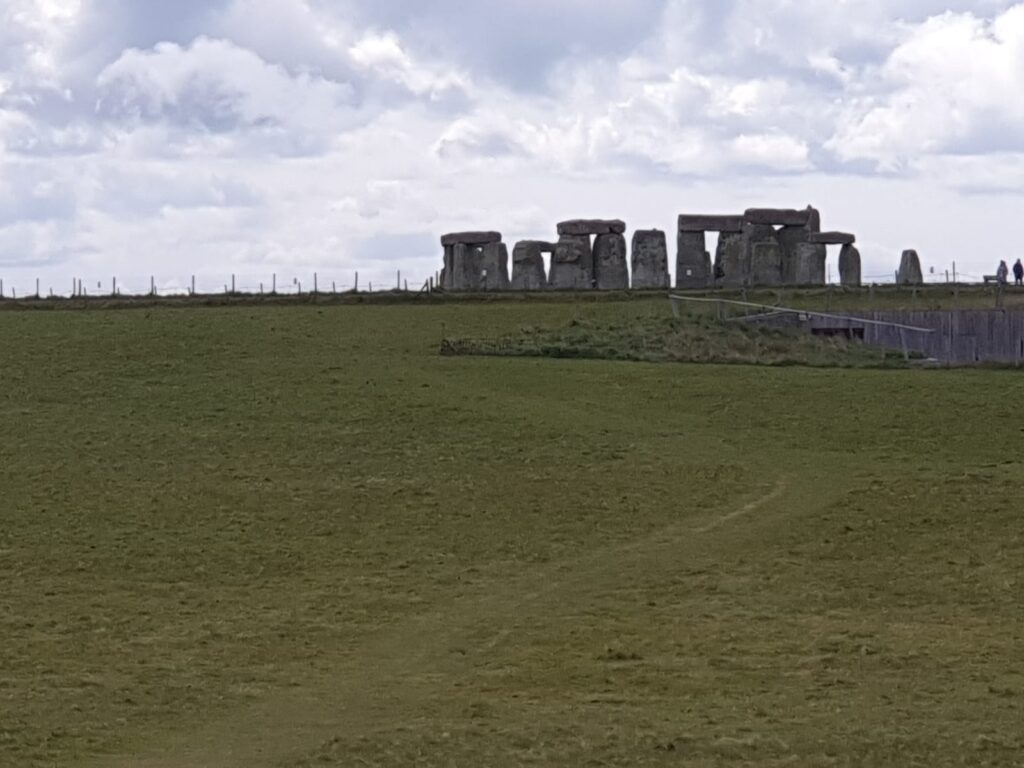 The weather was both kind and cruel, whilst not raining much on me, there was a persistent headwind and large amounts of surface water from Salisbury to Goring all along the Ridgeway. At night the temperature dropped sharply, so whilst I was prepared, I really struggle with cold weather riding.
The weather was both kind and cruel, whilst not raining much on me, there was a persistent headwind and large amounts of surface water from Salisbury to Goring all along the Ridgeway. At night the temperature dropped sharply, so whilst I was prepared, I really struggle with cold weather riding.
I managed to bend my rear hanger, reluctant to give it too much of a bend I was playing with gears for the next 20 hours. I missed those last few gears on the climbs!
Navigation, my usual battery recharge process worked fine at Avebury but in Reading my Garmin Edge just would not take charge. It then became a game of watching the remaining 15% battery life flow away. The section from Reading to Farnham, Hindhead and to the SDW is really tricky, it is nearly impossible to do it from memory. My back up option was my Fenix but having to glance at your wrist every 60 seconds in the dark proved challenging. Once mounted to the handlebar any movement turned on the backlight and consequently the watch (and main recording) died at the Devils punchbowl.
What went well:
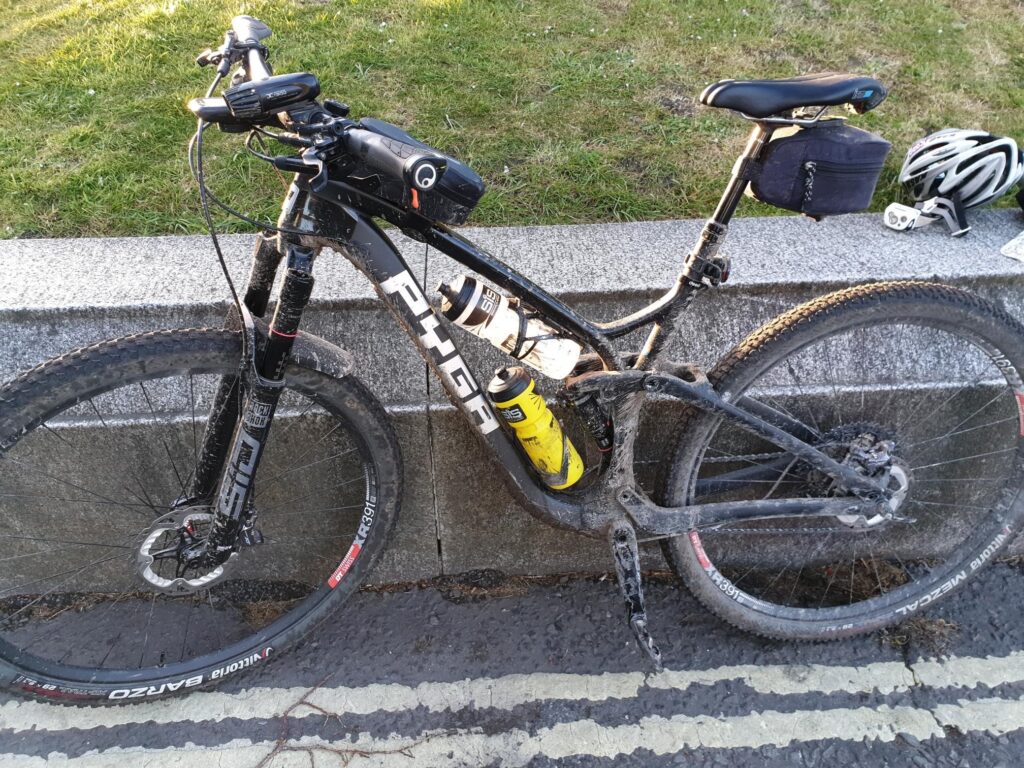 Legs, look after your legs and they will look after you. I paced this really easily at the start knowing it was going to be a long day. As a cycling coach I should be well prepared, but you never know what it will be like till the actual day. My plan was simple, stop and find hot drinks every 4-5 hours, all the other time just keep on moving.
Legs, look after your legs and they will look after you. I paced this really easily at the start knowing it was going to be a long day. As a cycling coach I should be well prepared, but you never know what it will be like till the actual day. My plan was simple, stop and find hot drinks every 4-5 hours, all the other time just keep on moving.
Nutrition, 35g/hr is half the normal 1g carbs/kg/hour recommendations but felt right given the intensity. I ate a range of sweet and savoury snacks, Naked bars, flapjacks, Torq gels for the end when quick energy fix needed. I have been using Skratch labs hydration mix for a number of years to top up electrolytes and small energy content, very easy on the stomach. The sustained drop in temperature probably took its toll by the end and in hindsight a higher carb intake would be required if I wanted to go faster (next time!).
Kit, I decided against backpacks, bum bags and had a gilet and Gabba with pockets that meant I carried food, spares, thermals, medical kit, emergency bivy, extra gloves, hand warmers, spare torches etc. On reflection I would keep the same system just choose milder weather.
The bike, I purchased a Pyga Stage frame PYGA Mountain Bikes – Handcrafted Bikes and then customised the build with things I really wanted. This included Shmano XT, SID Ultimate Forks, ISM Saddle, Dropper post. That bike was a dream, hats off to riders who do that route on a hardtail or gravel bike. Full Suspension is the way to go IMHO.
Mental resilience, riders often focus all their attention on the physical side of training. On a ride like this, drawing on previous experiences, saying little mantras, breaking the ride into small parts, remaining present are equally important to practice for success. Breaking the ride into small chunks and trying to remain present in the here and now, don’t worry about 10 hours later, just focus on the track ahead.Prepare for the worst and prepare well.
Even better if?:
Have another charging/triple backup navigation aid, it is a long way and you cant remember every turn especially at night.
The Ridgeway is a cracking section, choose a day with a tail wind (not a northerly) and you will love this exposed long section.
Next time I think I will do it over 2 days and include a stop with fluffy pillows and a 12 hour break. But actually doing it in under 24 hours is very rewarding despite being rather a long way outside my comfort zone. Remember Journey before destination.
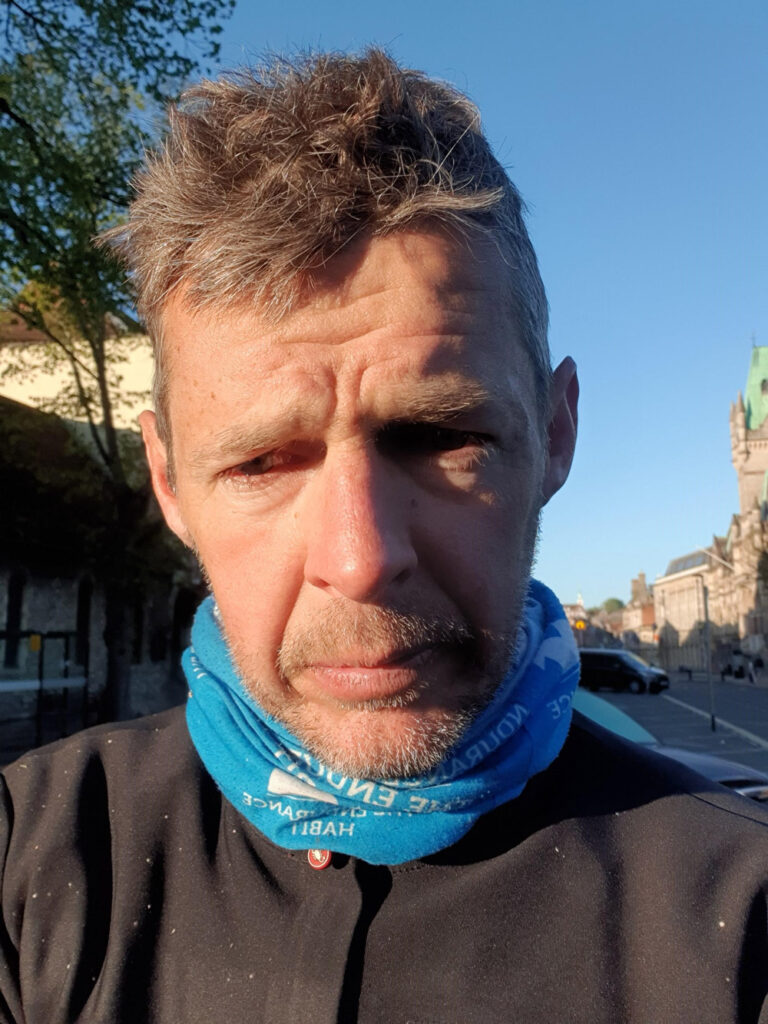 Feel free to email me if I can help you on your own adventure. Coach@theendurancehabit.com
Feel free to email me if I can help you on your own adventure. Coach@theendurancehabit.com
Toby Leyland. Proud to ride for About VC Venta – VC Venta
Photo at 6am at the end, finished. In more ways than one.
An incentive for this ride was in memory of Allan Sword a close friend who died in November 2020 having been knocked off his bike doing what he loved doing. RIP “AMH”, I was thinking of you and grateful to have shared some fun memories together.
Fancy doing the Rapha #Festive500 cycling challenge? How about doing it in one day!?
For some intrepid cyclists the Rapha #Festive500 | Rapha is a daunting mid-winter challenge. 500 kilometres. Eight days. Christmas Eve to New Year’s Eve. Riders are faced with poor weather conditions, sub zero temperatures, all whilst others are warm and dry enjoying the many festive treats on offer.
So what happens if you decided to attempt this in just one (very) long day, keeping to the original spirit doing this outside and on your own? (note: this was done when Covid rules allowed).
I spoke with Ollie Beresford who completed the Festive 500km challenge in a single day and was kind enough to answer questions with the aim to inspire and motivate other riders to take on their own endurance challenge in 2021.
Ollie has been coached by The Endurance Habit since 2017 as part of VC Venta – Winchester Cycling Club coaching program for developing promising U23 riders. Over this period Ollie has built his endurance, stamina and mental capacity deservedly gaining his 2nd category race licence in 2018. His responses to my questions below hide the hard work and hours of training he has done.
What made you decide to attempt the Rapha Festive 500km in a day instead of the usual 8 day period?
I guess I just love an adventure 😆. Over the years I have built up long distance rides starting with touring trips to bike packing. This was the next escalation. I love the opportunity to develop as an all-round person and rides like this provide the opportunity to step out of my comfort zone, learn about myself and develop mentally. So the idea of festive 500 in a day provided a good excuse to do the next adventure.
How much training did you do in advance?
I didn’t train for it specifically but have been riding regularly for the last 5 years with good consistency and structured focus in the last 3 years. I have just been training for the 2021 season on around 10-16 hours a week mainly endurance/strength stuff. I think mental training is probably more important than the physical!
Route: Winchester to Cambridge and back
Distance: 500.1km
Time: Moving 17:40:59 hours
Average Speed: 28.3kmh
Elapsed time: 19:26:01 hours
Stopped: 01:43:01 hours only!
Elevation gained: 3,554m
NP: 199w
Average Power: 172w
IF: 0.6 VI: 1.16
Average temperature: -1°, -5° min
Strava link: Hustle | Ride | Strava
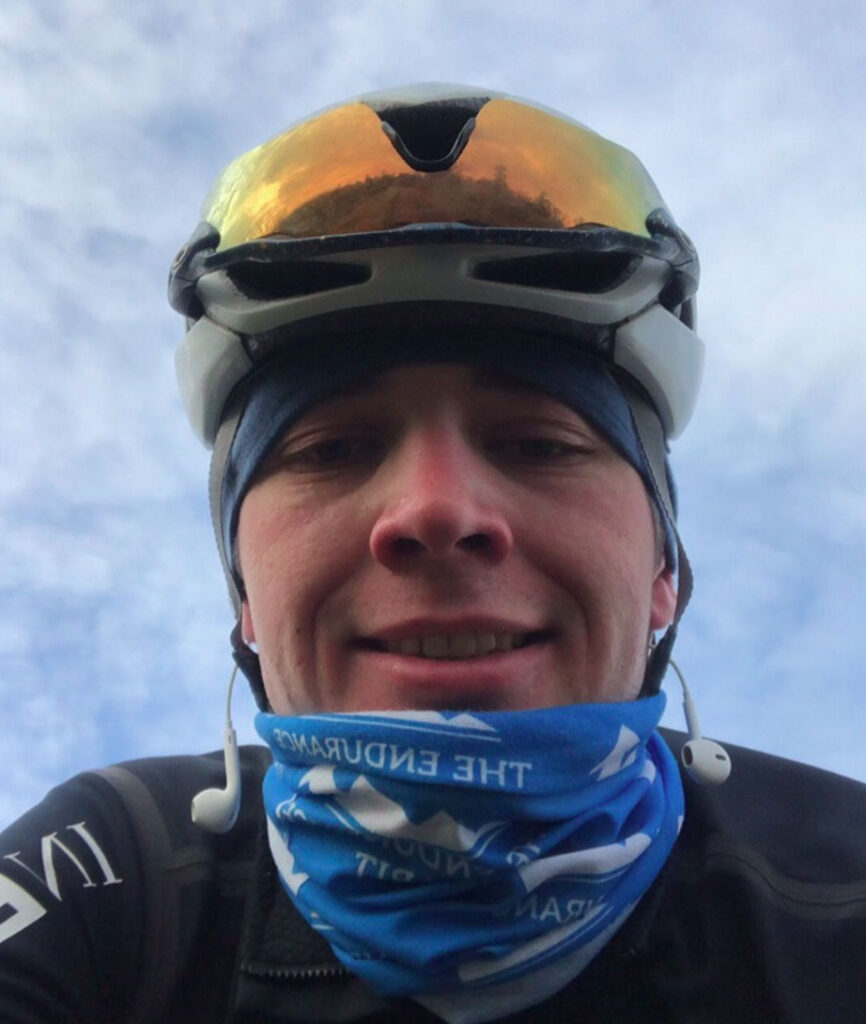
What was your planned intensity level? How did you manage to stay on target?
I kept it simple and just aimed for 200 watts or under as through experience this is the level I know I can sustain all day. Going over this for any small time was only going to hurt me at the end of the ride… I think you only learn that from experience! I asked Ollie about this point, as he had only 3% of his time above zone 1 or zone 2. Amazing intensity discipline. It also turns out he had a nagging muscle injury that prevented him from standing up!
It was on average -2 degrees, how did you keep warm?
Luckily I’m the sweatiest bloke on the planet and therefore don’t usually struggle to keep warm… Kit wise I made sure I had all my favourite bits for the ride, with my Gabba being the essential item. Oh and my “the endurance habit” buff of course. If I got cold I would push a little harder up the next hill to get warmer again.
You rode up to Cambridge and back, was that a planned route to avoid hills or a favourite route?
Definitely a planned route! When the goal is distance, there’s no point making it harder for yourself! Nice and flat with good roads.
If you did it again what would you do differently?
I only had 8 hours of sunlight so maybe a different time of year, although I don’t mind the dark. I actually can’t think of anything for this one, it sounds a silly but it was pretty perfect.
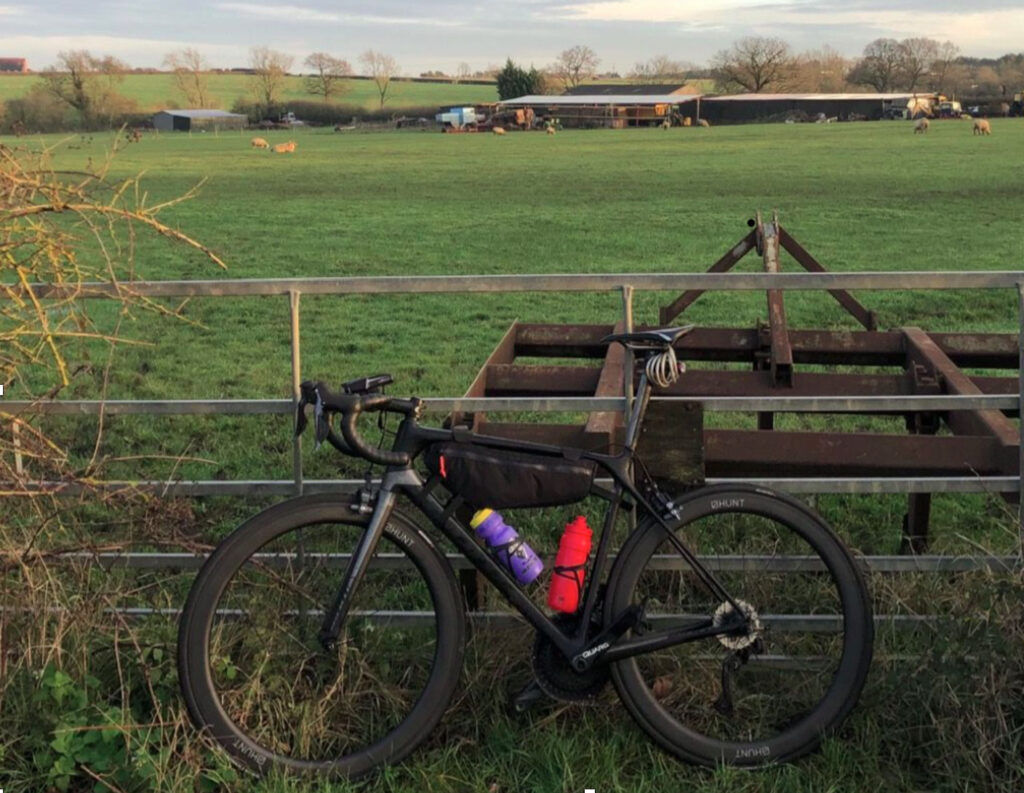 What advice would you give to someone wanting to attempt a long distance challenge like this?
What advice would you give to someone wanting to attempt a long distance challenge like this?
It’s a lot easier if you really want to do it at the start. I usually mentally prepare a week in advance so that by the evening before I can’t wait to get started. Acceptance is probably the most important skill. Things will go wrong and you’ll get niggles. Accepting they’re there and putting them to the back of your mind is pretty important otherwise they’ll just eat away at you and you’ll never finish. Don’t look at distance/time on your Garmin/wahoo the whole time. Give yourself smaller mile stones. I usually go for a big town around a third of the way, then one at halfway and then another town at ¾ of the way. You get little victories each time one is achieved. (But don’t focus too much on the half the distance one otherwise you will crack when you get there and realise you’ve got to do it all over again!)
Thanks to Ollie for his answers. Feel free to get in touch if you would like to discuss a challenge that excites you for 2021. Toby Leyland. Coach. https://theendurancehabit.com/
South Downs Way Double in under 24 hours
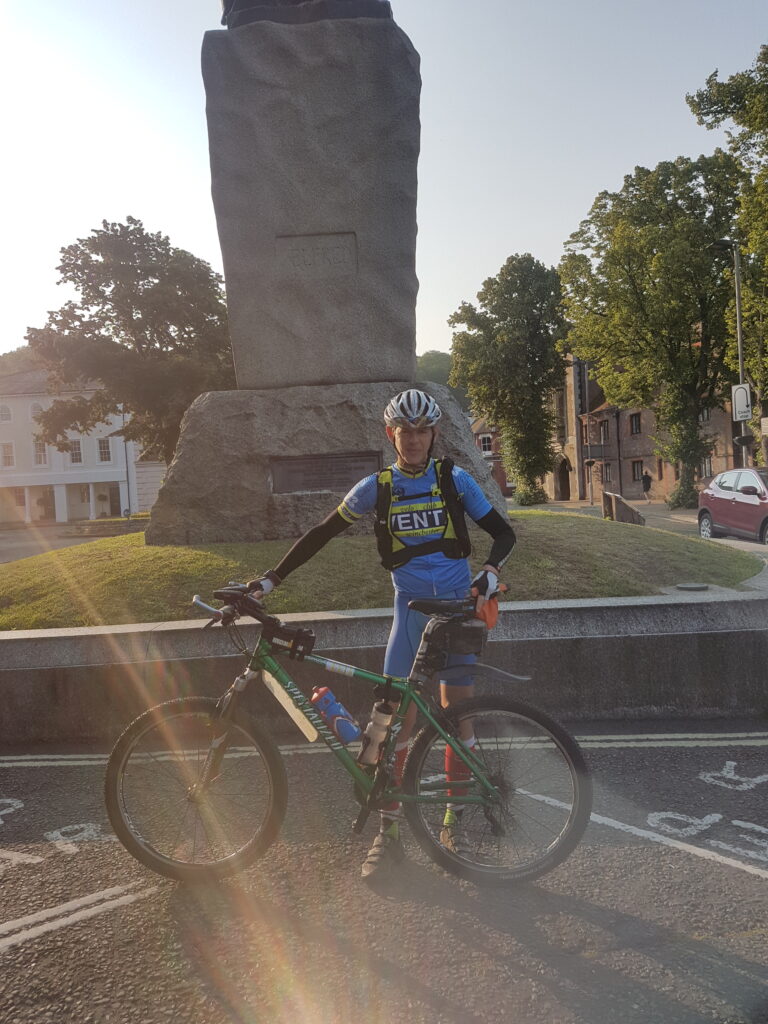 Weather: High 31degrees. Wind E / NE 15- 20kmh
Weather: High 31degrees. Wind E / NE 15- 20kmh
“You are going too fast, you are going to crash and it will hurt”. The front wheel washed out from in front of me, shoulder and thigh thumped into the ground. “Told you it would hurt”. Sometimes that voice in your head is not so helpful. Yes it did hurt and yes I was going too fast.
It was a training ride and a useful lesson in humility and self-preservation. This was 2 weeks before my attempt at the South Downs Way (SDW) double. I am looking at my experience from a coach’s perspective to identify what went right, what went wrong and what I would advise other riders to do next time. I am a cycling and triathlon coach at www.TheEndurancehabit.com helping people achieve their goals. It is far easier to be objective with others than listening to your own advice!
The South Downs way (SDW) is a long distance path using drovers’ tracks that have been in existence for 1,000’s of years. It runs from Winchester to Eastbourne for 100miles (155km). For cyclists it is an exciting challenge to complete in one go, for the bold the double, and the endurance specialist, do that with the time pressure in under 24 hours. There is a great source of information maintained by Julian Paphitis that neatly states “cycle 200miles, climb 22,000ft and open 200 gates in under 24 hours”. Simple. Website https://www.southdownsdouble.co.uk/ has the route, location of taps, hall of fame and plenty of other useful information.
I contacted Rob Carter and Ed Gurney both local Winchester cycling and running legends who had completed the SDW double in 2015, Robs cheery note that it should be fine to get to Eastbourne in about 10 hours as the tracks are dry not realising that I was also planning on coming back.
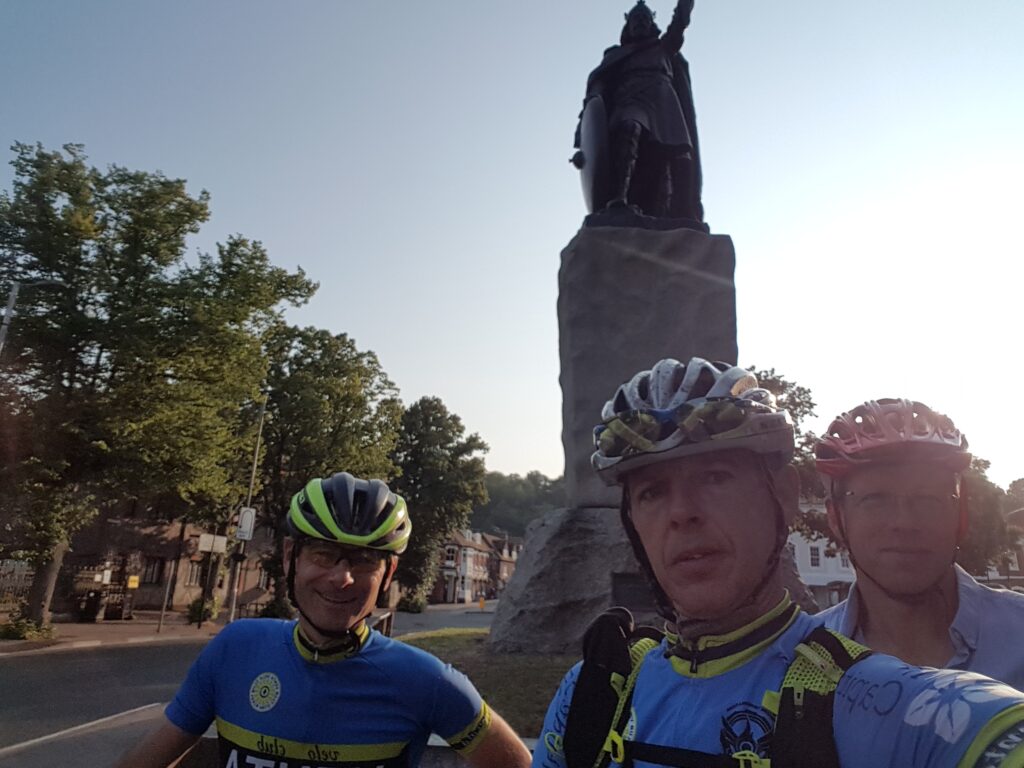
#1 Believe in yourself, look at where you have come from, what you have done when things were hard. A positive mindset will take you a long way. With races and events cancelled in 2020, the idea of riding for 24 hours, off road, alpine style appealed, if I don’t do it now I never will. You are only ever as fit as you are at that point in time, no one gets to the start line and thinks “yep I am fit enough”.
#2 Preparation, it is not just the physical side but the technical, psychological, nutritional, emotional and logistical sides that are equally important for an adventure. Timing, start early, be fresh and fast, start at dusk and do the night shift on fresh legs, it all depends on your point of view.. What, where, when, why, how, who. Answer these questions and you are on the right track. I decided to start at 7am assuming that I would be faster on the downhill sections while fresh compared to the downhill in the dark when I would be slow anyway. I would also benefit from a good night’s sleep rather than worrying all day.
#3 Have a plan and be prepared to adapt. Kindly, Rob and Ed joined me at the start, obligatory photos by the King Alfred statue and then we rolled out. Rob directed us onto the correct SDW route rather than the one on the SDW double website, minor problem was my mileage chart with distances to water stops was now 1.3km out. I had removed the time part of my plan, whilst a 24 hour target was on the cards, I did not want extra pressure at every water stop. Just focus on breaking the ride into small chunks, 4 sections with 3 stops for water in each quarter, 12 in total.
#4 Acceptance, things will go wrong, accept it, diagnose the problem, create an action and deal with it. Having extolled the virtues of my new Race King tyres with their shield wall tyre protection system to Ed, it was a shock to have a puncture in the first 10kms and then Ed pointed to a 6” screw sticking out of my rear tyre. Sidewall puncture plugged and screw removed, 2 punctures already! In the end I had 8 punctures and “lost” 2 ½ hours sitting fixing them. By the last one at 4am I had fully accepted them as part of the journey.
Rolling to QECP, I felt good and past 2 riders on loaded bikes, Karl and James. They were heading to Eastbourne and back but stopping overnight so hopefully I would cross paths on my return. It was comforting to know I was not alone in case of more mechanical problems. I am not a big fan of carrying additional kit, keep things simple, but no simpler. With hindsight even more inner tubes may have been an idea!
Pushing on to Amberley, 4 hours 75kms done, I smiled as I rolled past the spot I had crashed 2 weeks ago and thought how important bike skills are when riding, even more so when off road and pushing hard. I believe in order to know where your limit is, you occasionally have to step beyond it.
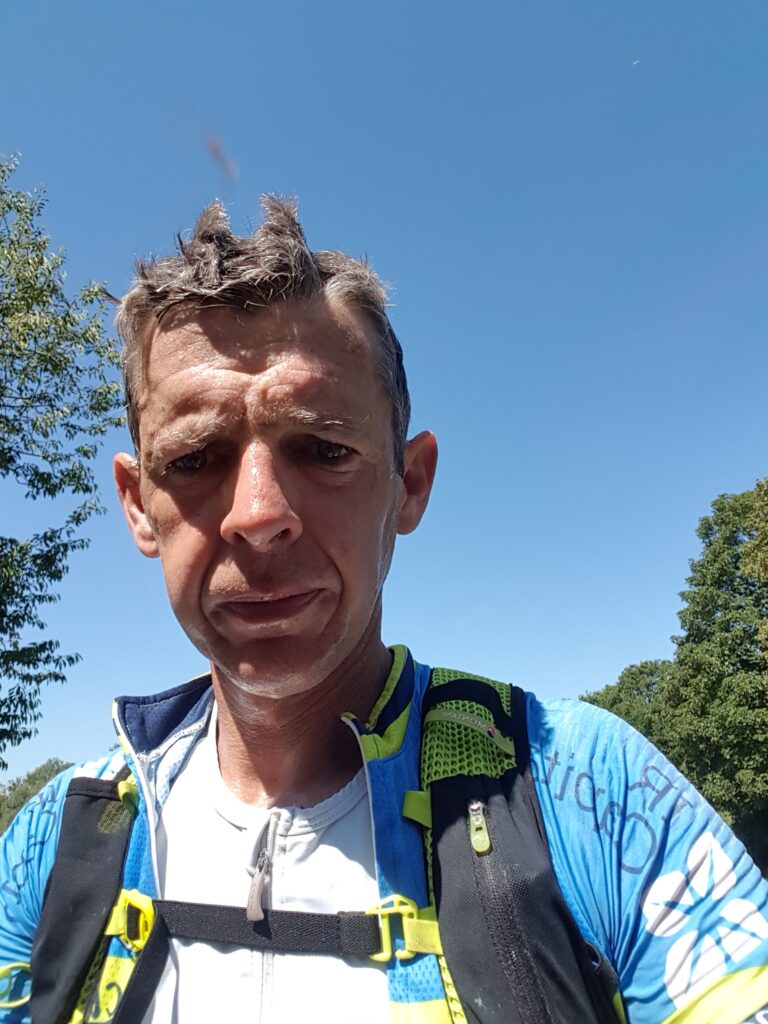
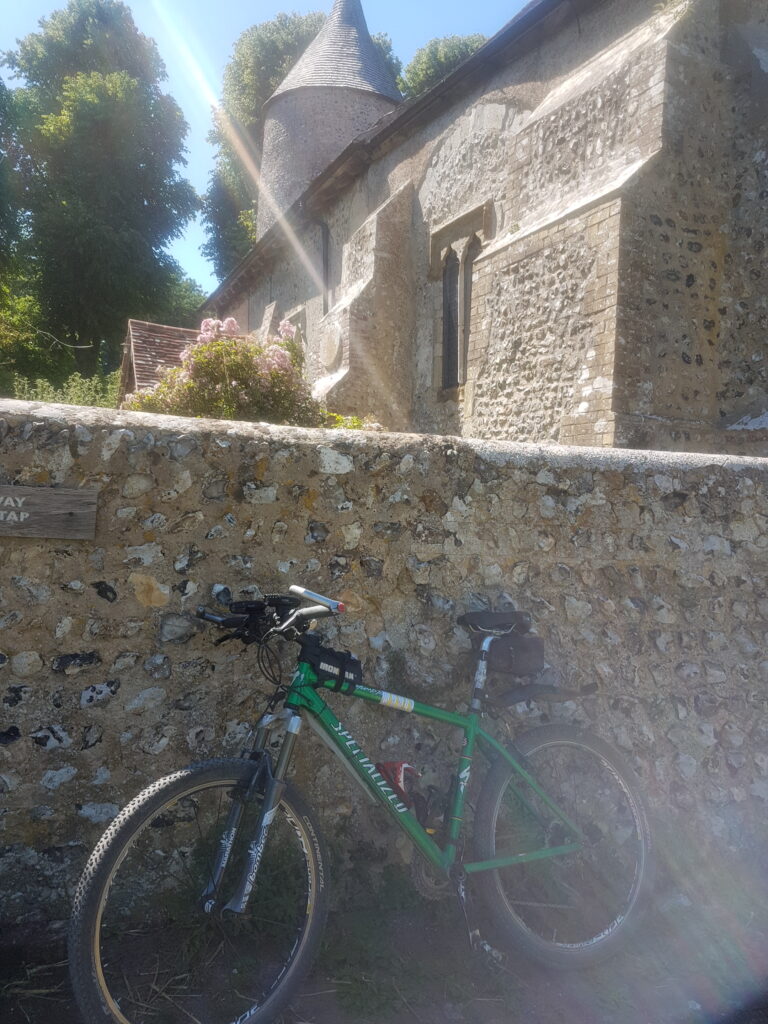
#5 Look after your legs and they will look after you. This was one of the mantras replaying in my head. Back off on the steep climbs, (I walk at 4km/h and cycle at 6km/h). Push on the flats and the downhills and if you have protected your legs by not burning all the muscle glycogen, they will continue to work.
#6 How bad do you want it? The section from Washington to Eastbourne had a strong head wind, energy sapping heat (my garmin showed 36 degrees at one point) and I was not even half way yet. Keep moving, keep rolling when everything else is telling you to stop. Not finishing a race and having DNF on my race list made me realise the importance of being ready to work hard when things get uncomfortable.
About 9 hours into the ride I came to Southease church. Not just an idyllic location but a large tap of cold water to completely soak myself in. Heaven. Only a couple of hours to Eastbourne which is when the nutrition plan fell apart. The nutrition plan is so hard to get right and is even more bespoke than a power training plan. I suspect by now mild (or severe) heat exhaustion was kicking in.
Finally I fly down past the golf course to Eastbourne, stop the mental clock at 10:02:00 hours and take the obligatory photo. With hordes of people around a trip to the promenade was cancelled. A short stop and chat to a rider who had just come from Winchester to Eastbourne in 14 hours. We swapped heat horror stories and then it was time to head back up the hill. Mentally I was heading home and from now on every pedal stroke was taking me home.
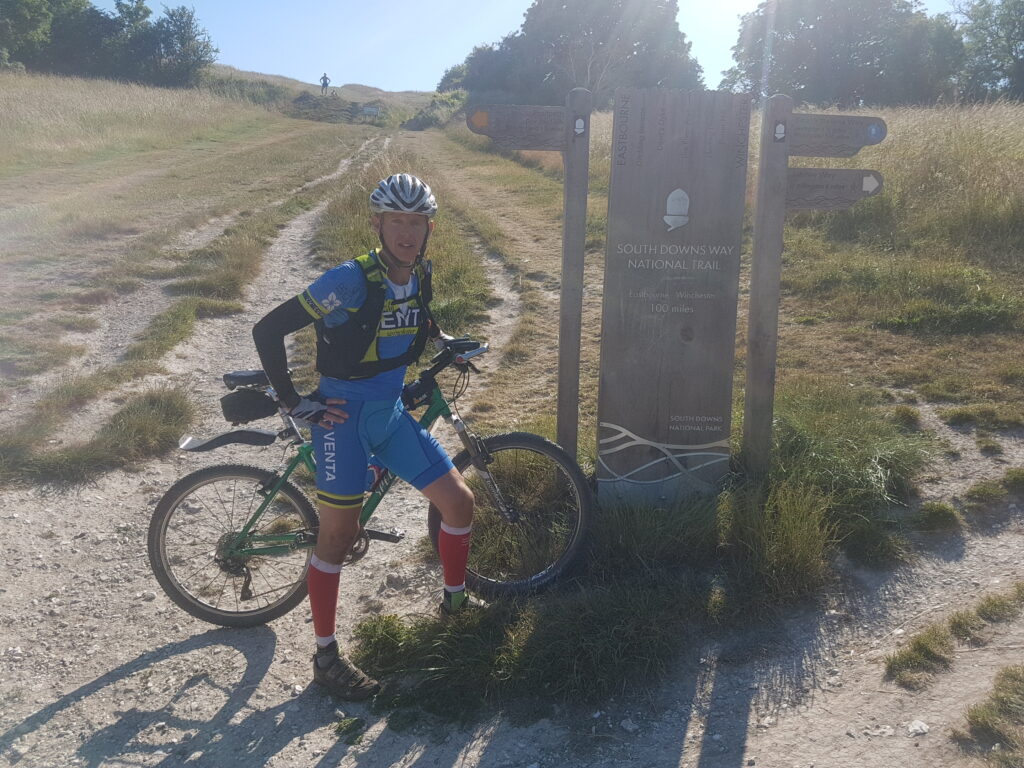
#7 It’s ok to stop and lie down. The advice is to keep going and don’t stop, however with both caffeine and halfway joy wearing off I needed a “reset”. Falling off my bike and lying in corpse pose flat on the grass for a few minutes helped completely reset my “system”. I think my wife Louise would have been very impressed with my savasana pose.
Back to Southease Church my favourite water stop and a welcome soak under the tap. 180km completed 120km to go. On the positive side the heat had abated, the wind was on my back and I was nearing my furthest distance ever. I was reminded by some good advice from Angus who had completed it a few weeks previously. “Just focus on your knitting”. When the hills get hard, don’t look up just turn the pedals and remain in the present, don’t think about the next hill. The light continued to fade and I finally felt on a roll, easy on the ups, steady on the flats and pushing hard on the downhills. The walkers had dispersed, the silence draws in and I realised how beautiful the SDW is and how lucky I am to be doing this.
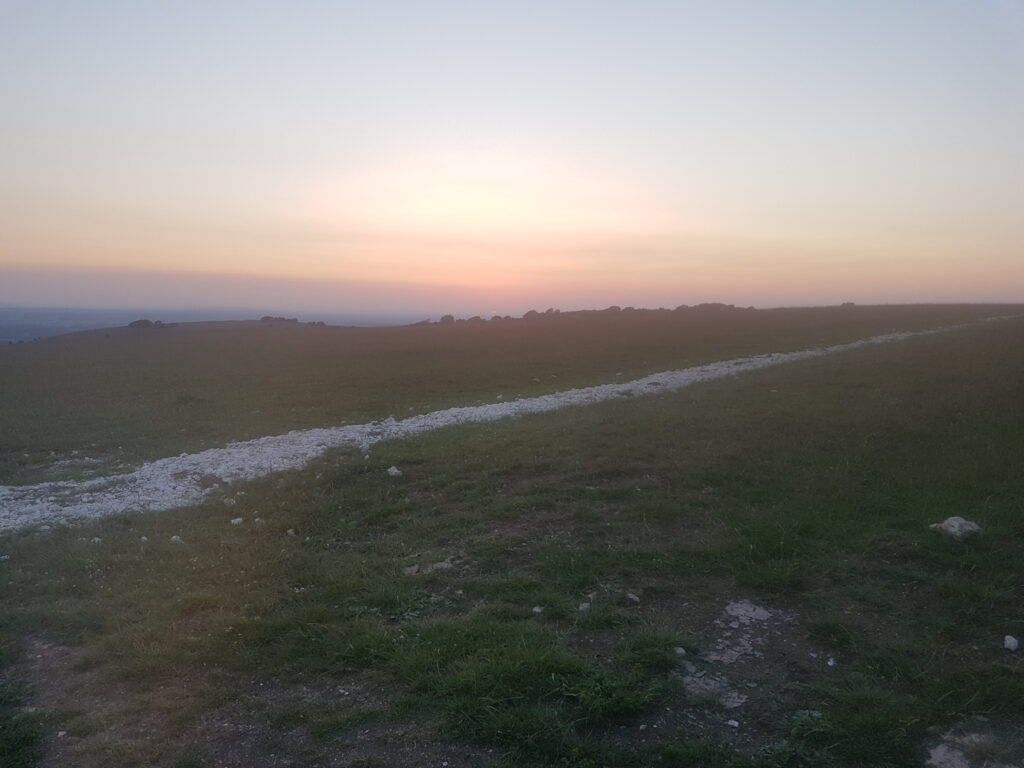
#8 Support crew. I was doing this Alpine style with no outside help. A close ultra running friend Richard Whittle had agreed to be on standby just in case I had a problem in the early hours. “Don’t worry I wont need you, it is just a precaution!”. At 12:30am I was defeated and 75km from home, the prospect of giving up was very tempting.
Massive thank you to Richard for driving out at 1am to Amberley with 2 spare inner tubes, more spare patches and a pump. Tubeless tyres are great till they stop sealing and inner tubes are great until they split and won’t hold.
Louise and my brother (in Australia) talked to me on the phone and with my spirits raised, I walked 5km to meet Richard and we would start again. I now had 5 hours to get back to Winchester. It had taken me 4 hours on the way out when I was fresh.
Riding at night is special, sounds, shapes and all manner of wildlife come out into your torch light. I ticked off the Hampshire big 6 (Barn Owl, Badger, Fox, Deer, Bats, and Rabbits). Despite crashing into the only large area of mud on the whole route, I kept pushing on. A very good sense of humour helps at this point.
#9 Listen to your body. I had planned on 50g carbs/hour and had managed about half that in the last 3 hours, as long as I keep some fluid coming in, I know that I can “run on empty” for quite a while. At the end of the ride I had 37g carbs/hour, so for a 69kg rider I was well under the target. Having done a number of Endurance events, Ironman, ultra runs I have become adapted to what I can do with minimal carb intake as long as I keep some fluid intake and keep it “easy”.
Jamie Collins kindly agreed to meet me at QECP at 4:30am to ride the last part home, a mix up and my decision not to stop for water meant I was walking half way up Butser hill when he was at the top of QECP. He is a very quick rider and so a little game of chase ensued with the next uphill being catch up time. It was great to see a friendly face in the dawn and the sub 24hr target was still on despite everything that had happened so far, just no more punctures please!
We rolled through the last 35km, a little slower on the climbs but still moving, a quick photo at the top of Cheesefoot head and it was all downhill from here.
I completed the ride in 23hours 21 minutes, 310km, 6,643m elevation gain, average speed 13.3kmh, stopped time 3hours 21 minutes, moving speed 15.3kmh, 1,078 hr Training stress score.
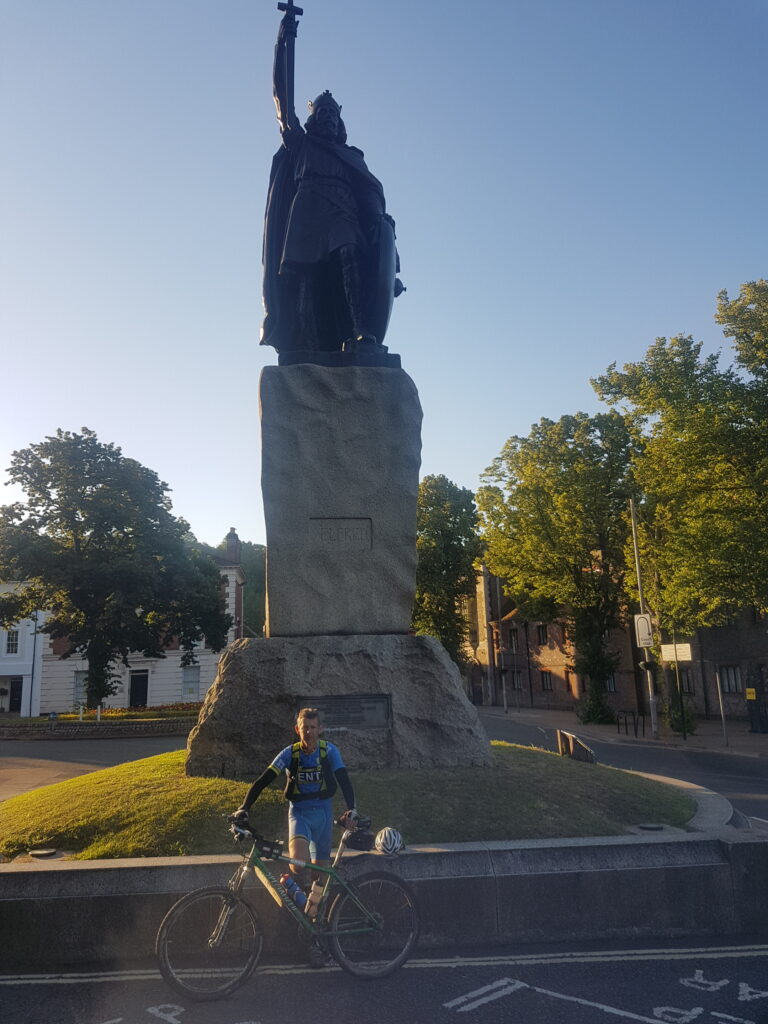
Reflection:
My definition of success was to complete 310km, enjoy the adventure, and lastly try to do it in 24hours. I managed all three of those and might be tempted to do it again but with different tyres next time!
If you are interested in discussing your race plan or have a review of your training prior to an event then get in touch by email coach@theendurancehabit.com or give me a call on 07739560590.
Here’s till next time!
Toby
www.theendurancehabit.com Footnote: Those Race King tyres are now in the bin!
Benefits of using a British Cycling Level 3 Coach
The British Cycling Coach Level 3 qualification is the highest recognised coaching certification in cycling, allowing coaches, who have the practical skills, experience and knowledge of cycling, to plan, deliver and evaluate detailed periodised training programmes for individual riders within a specific discipline.
The British Cycling Coach Directory is the place to find a British Cycling Level 3 Coach. Here you will find all the coaches in your area, their contact details, and what they can offer you as their Coach.
The British Cycling Training Plans will deliver you to the start line of your event perfectly prepared and fit to tackle the most demanding of Sportives, British Cycling Level 3 coaches will take your cycling to the next level and potentially help you make the move into racing.
Taking on a Coach is potentially the best investment you will ever make and will certainly benefit your cycling more than a flash new set of wheels.
The relationship between a coach and an athlete is a two way process so it’s essential you ask the right questions before you commit to a coach.
Cycling Weekly: Why everyone needs a coach and how to choose one
Cycling coach is a very catch-all title, meaning different things to different people. Choosing the best coach should be determined by your needs. Coaching covers all aspects of cycling, from skills to training plans, tactics, psychology and helping manage lifestyle issues.
Not all coaches cover all areas, and each coach has their own style. Some are great motivators, while others know the science of cycling inside out or have great tactical awareness and race skills. So, do you need a coach and, if so, what do you need one for?
For some people, getting professional guidance is all about having a well designed training plan; others benefit from having support and a sounding board for their ideas and experiences. For many people, just being accountable to someone else renews their enthusiasm and commitment. Just the fact you’re paying for advice may motivate you more.
One important benefit is that less time is wasted. Whether it’s stripping back on ‘junk’ sessions in favour of more effective training, or someone spotting your mistakes and finding ways to develop better technique, a coach can help fast track you to a point that would have taken years on your own through trial and error.
